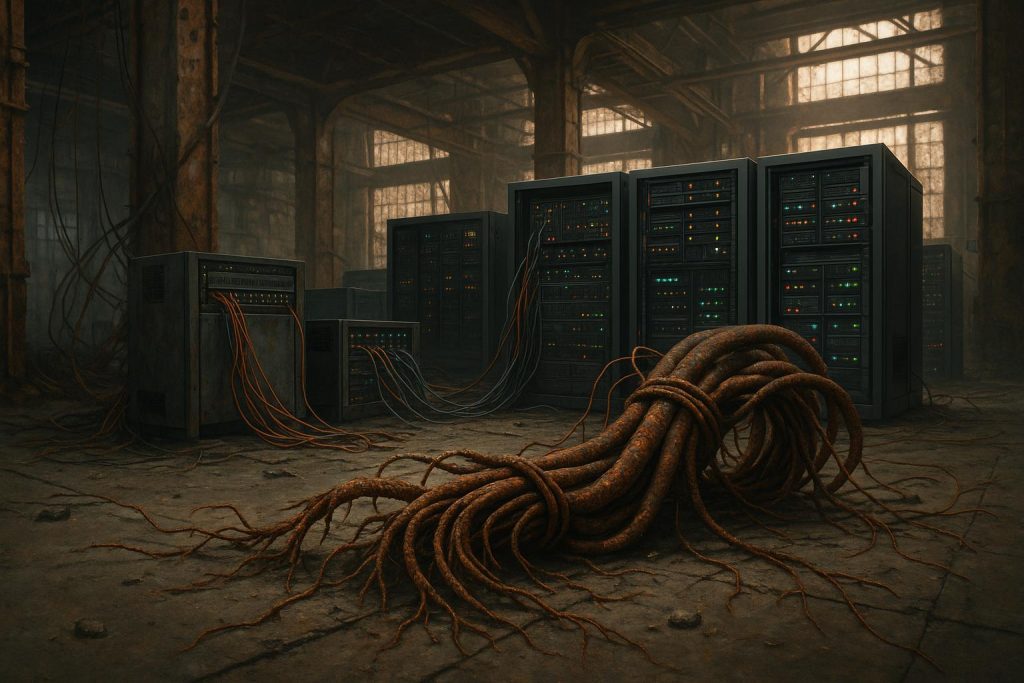Listen to the article
From legacy wiring to AI-enabled smart automation, the evolution of systems integration is shaping the future of seamless digital business operations amid increasing interconnectedness.
In today’s hyper-connected digital landscape, systems integration has become indispensable. It is the critical process that enables disparate applications, platforms, and devices—ranging from Customer Relationship Management (CRM) systems and Enterprise Resource Planning (ERP) tools to payment gateways and Internet of Things (IoT) devices—to communicate and share data seamlessly. This integration underpins smooth business operations, real-time service delivery, and enhanced customer experiences.
Historically, systems integration began as a cumbersome endeavour marked by “point-to-point” connections. Early IT environments resembled tangled webs of direct cables linking systems individually, a method unsustainable as businesses scaled. This phase gave way to more structured approaches such as hub-and-spoke models and Enterprise Service Buses (ESBs), which acted as central mediators facilitating message exchanges between systems. The arrival of Application Programming Interfaces (APIs) marked a significant leap, standardising communication protocols and enabling cloud and SaaS platforms to flourish.
More recently, the integration landscape has transformed further with the rise of real-time and event-driven architectures. These approaches enable instantaneous responses to business events, akin to traffic lights reacting dynamically to cars rather than following fixed timers. The proliferation of IoT expanded integration beyond traditional IT systems to include devices like wearables, smart appliances, and industrial sensors, blending physical and digital realms.
Integration now spans a wide taxonomy of types—classified by communication style, data exchange mode, interface technology, system category, security protocols, and specialised use cases including AI and social media APIs. This extensive classification underscores integration’s complexity and versatility, accommodating everything from legacy mainframe connections to streaming data from edge devices and AI-driven cognitive services.
Industries illustrate the practical power of integration vividly. Healthcare systems rely on HL7 protocol integration to connect hospitals and laboratories for efficient patient care. Financial services integrate core banking with fraud detection and payment gateways for secure transactions. Retail links point-of-sale systems with inventory and eCommerce platforms to manage supply chains dynamically. Manufacturing plants use IoT sensors integrated with predictive analytics to optimise maintenance and reduce downtime.
Despite its critical role, systems integration faces persistent challenges. Data silos caused by varied formats and legacy infrastructures hinder unified insights. Custom integrations often require prohibitive maintenance costs. Latency remains an issue where batch-processing delays decision-making. Security vulnerabilities can arise from exposed APIs. Moreover, integrating outdated legacy systems necessitates specialised, sometimes workaround, solutions.
The latest evolution in integration harnesses artificial intelligence to address these challenges and unlock new efficiencies. AI-powered smart automation can auto-discover data mappings, effectively acting as a digital assistant configuring integration pathways. Predictive analytics identify anomalies in data flows before they cause disruptions. No-code interfaces enable users to define workflows conversationally, democratizing integration creation. Self-healing capabilities allow systems to detect and fix broken connectors autonomously, enhancing reliability.
Looking ahead, integration is projected to become even smarter, increasingly event-driven, and modular—designed like building blocks that businesses can snap together as needed. Security will be enhanced with identity-first, zero-trust models embedded from the outset. These advancements will not only bolster operational agility but also form the backbone of next-generation connected enterprises fueled by AI and IoT data surges.
In sum, the journey of systems integration has progressed from messy, direct wiring to sophisticated, intelligent ecosystems orchestrated by AI. Today, integration is much more than a technical function; it is the foundation of seamless digital business operation and innovation in an increasingly interconnected world.
📌 Reference Map:
- Paragraph 1 – [1], [2], [6]
- Paragraph 2 – [1], [3], [6], [5]
- Paragraph 3 – [1], [3], [5]
- Paragraph 4 – [1], [6]
- Paragraph 5 – [1], [6], [2]
- Paragraph 6 – [1], [4], [5], [7]
- Paragraph 7 – [1], [4], [7]
Source: Fuse Wire Services


